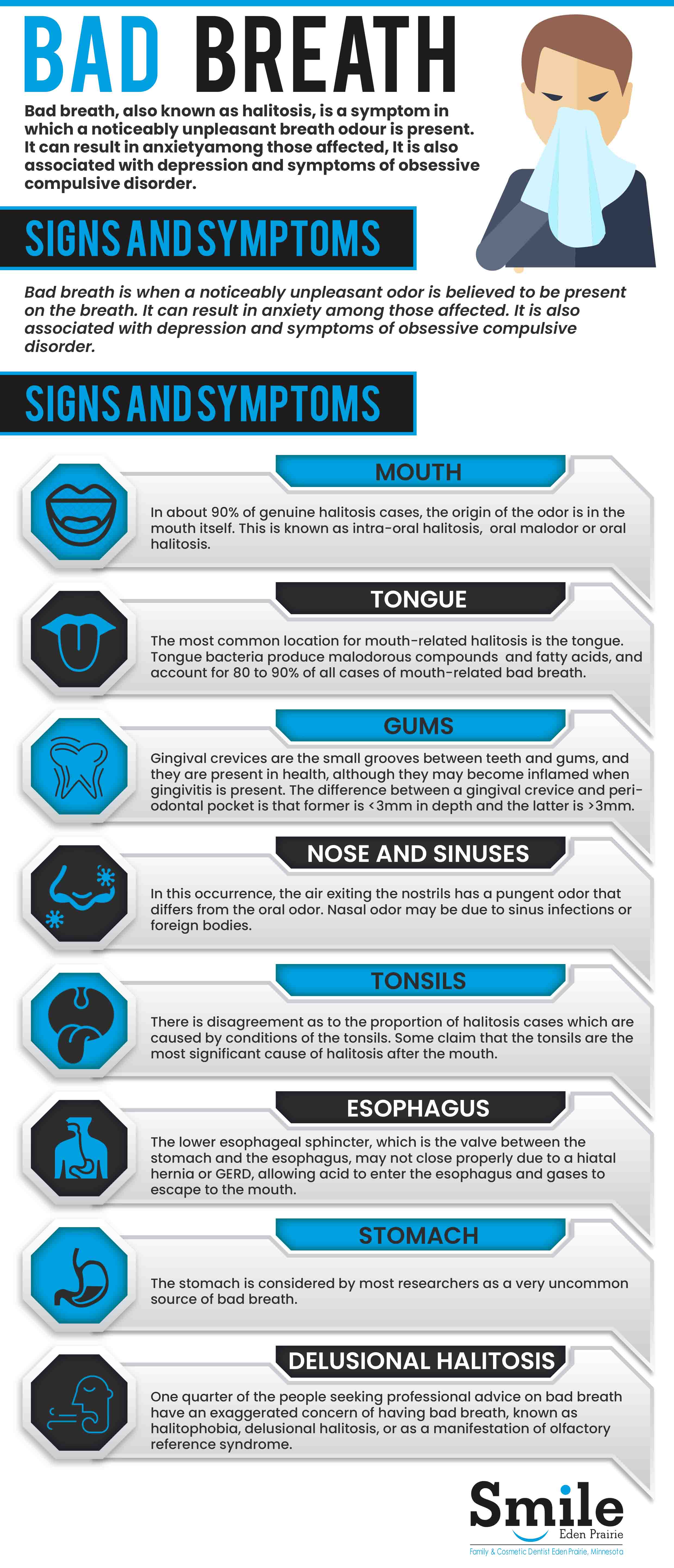General Dentistry Concepts: Halitosis
Bad breath, which also referred to as halitosis, is a symptom where a noticeably bad breath odor is present. It can cause anxiety in those who are affected by it. It is also commonly associated with depression and obsessive compulsive disorder symptoms.
The concerns of bad breath may be divided into two different categories: genuine and non-genuine. For patients who experience genuine bad breath, about 85% of the cases are caused by an issue from inside the mouth. The remaining cases are typically a result of disorders in the nose, sinuses, throat, lungs, esophagus or stomach. It is rare for bad breath to be caused by an underlying medical condition such as liver failure or ketoacidosis. Non-genuine cases occur when someone thinks they have bad breath, however it is not detected by others. This is estimated to represent 5-72% of cases.
The treatment for bad breath largely depends on the underlying cause. Initial treatment efforts may include tongue cleaning, use of mouthwash and flossing. Some evidence supports improvements when using mouthwash containing chlorhexidine or cetylpyridinium chloride. While there is also tentative evidence of patients benefiting from the use of a tongue cleaner, it not sufficient enough to draw clear conclusions. It can be helpful to first treat any underlying disease such as gum disease, tooth decay or gastroesophageal reflux disease. Counselling can also be useful for those who mistakenly believe that they have bad breath.
Bad breath is estimated to effect anywhere from 6% to 50% of the population. Following tooth decay and gum disease, bad breath is the third most common reason people seek professional dental care. Bad breath is believed to be more prevalent as people age. People in the United States spend over $1 billion annually on mouthwash to treat and prevent bad breath.
Causes
In about 90% of halitosis cases, the odor comes from inside the mouth. This condition is known as intra-oral halitosis, oral malodor or oral halitosis.
The most common causes of bad breath are odor producing biofilm found on the back of the tongue, below the gumline, and in the pockets between the teeth and the gums. The presence of biofilm results in the production of a foul odor. The odors are produced mainly as a result of the breakdown of proteins into individual amino acids. This is followed by the further breakdown of certain amino acids which produce detectable foul gases. Volatile sulfur compounds are associated with oral malodor levels which usually decrease following successful treatment. Other parts of the mouth may also contribute to the overall odor, but are not as prevalent as the back of the tongue. These odor producing locations include inter-dental and sub-gingival niches, faulty dental work, food-impaction areas in between the teeth, abscesses, and unclean dentures. Oral based lesions which are caused by viral infections such as herpes simplex and HPV can also contribute to bad breath.
The intensity of bad breath may vary during the day. The varying degrees of bad breath can be from eating certain foods such as garlic, onions, meat, fish, and cheese, smoking, and consuming alcohol. Because the mouth is exposed to lower amounts of oxygen and is inactive throughout the night, the odor is usually worse in the morning upon awakening. Bad breath may also be transient and often disappears after eating, drinking, tooth brushing, flossing, or rinsing with mouthwash. Bad breath may also be chronic, which affects about 25% of the population in varying degrees.

